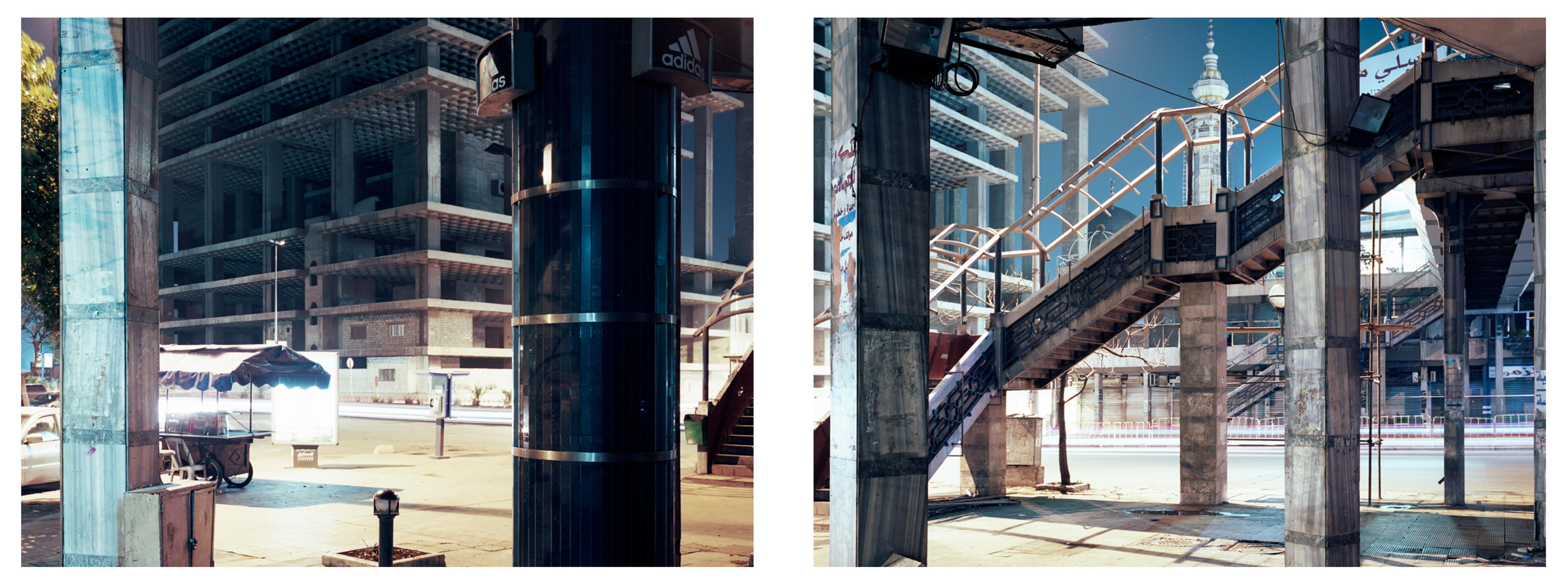


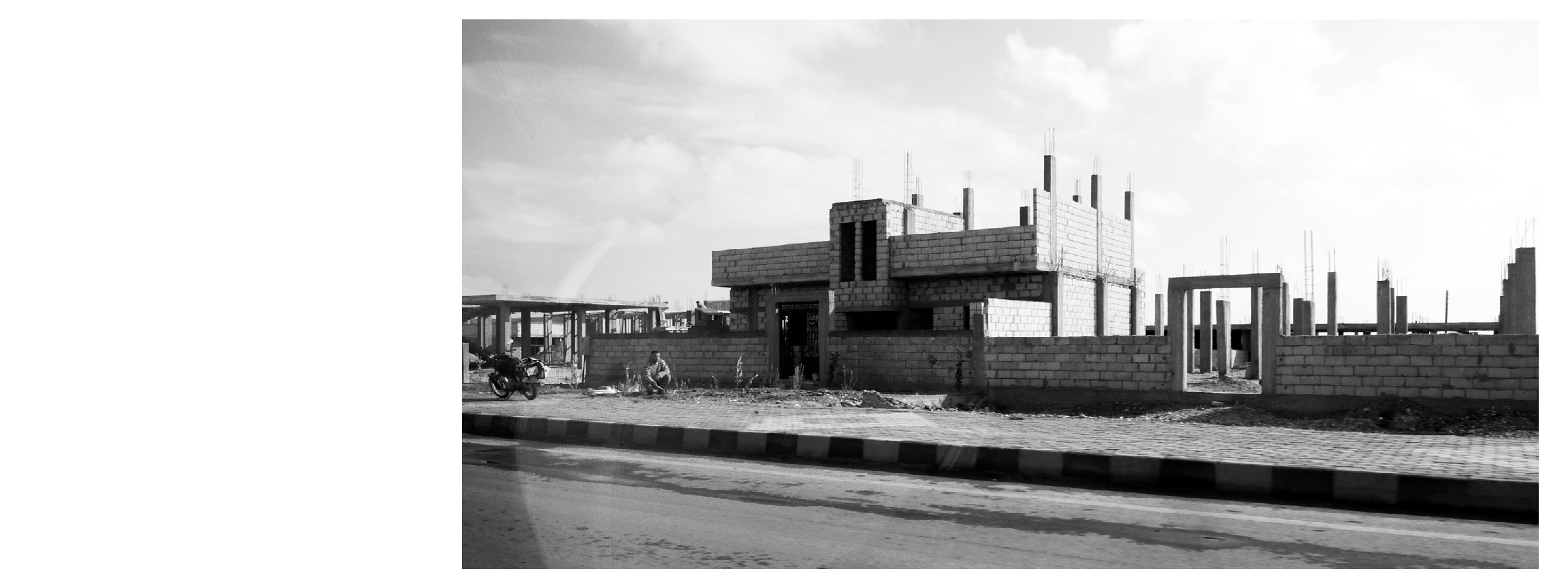

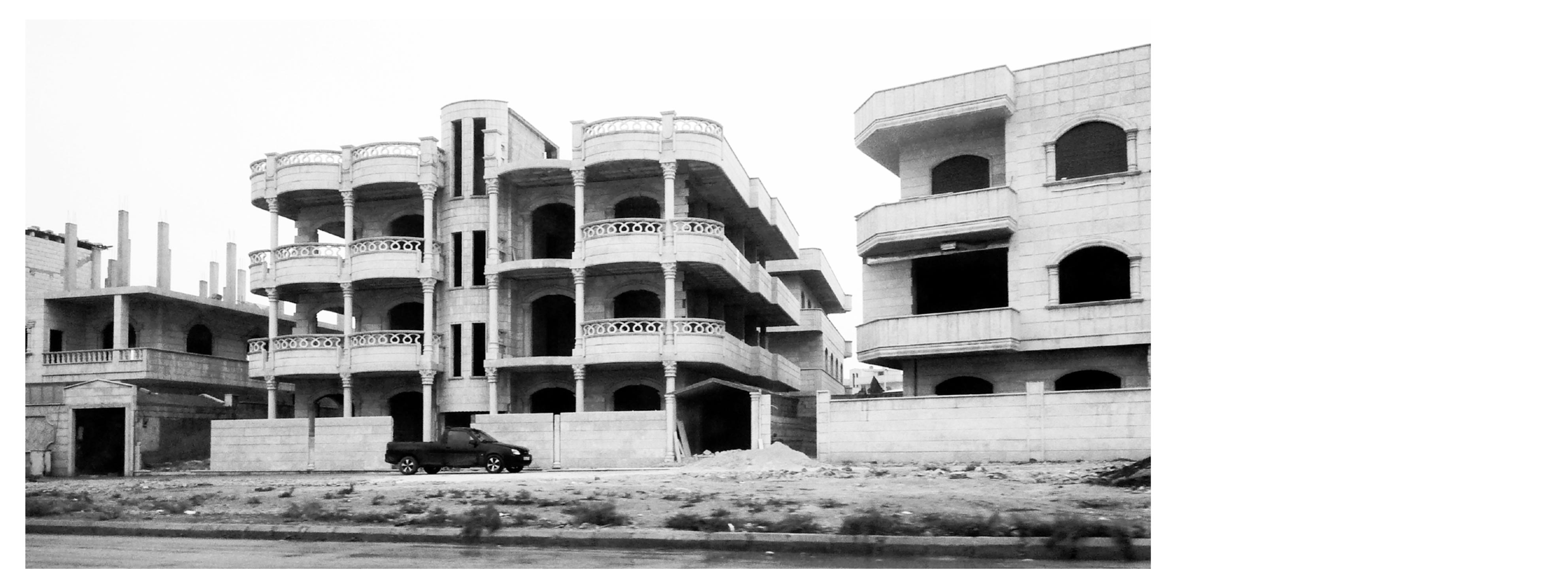

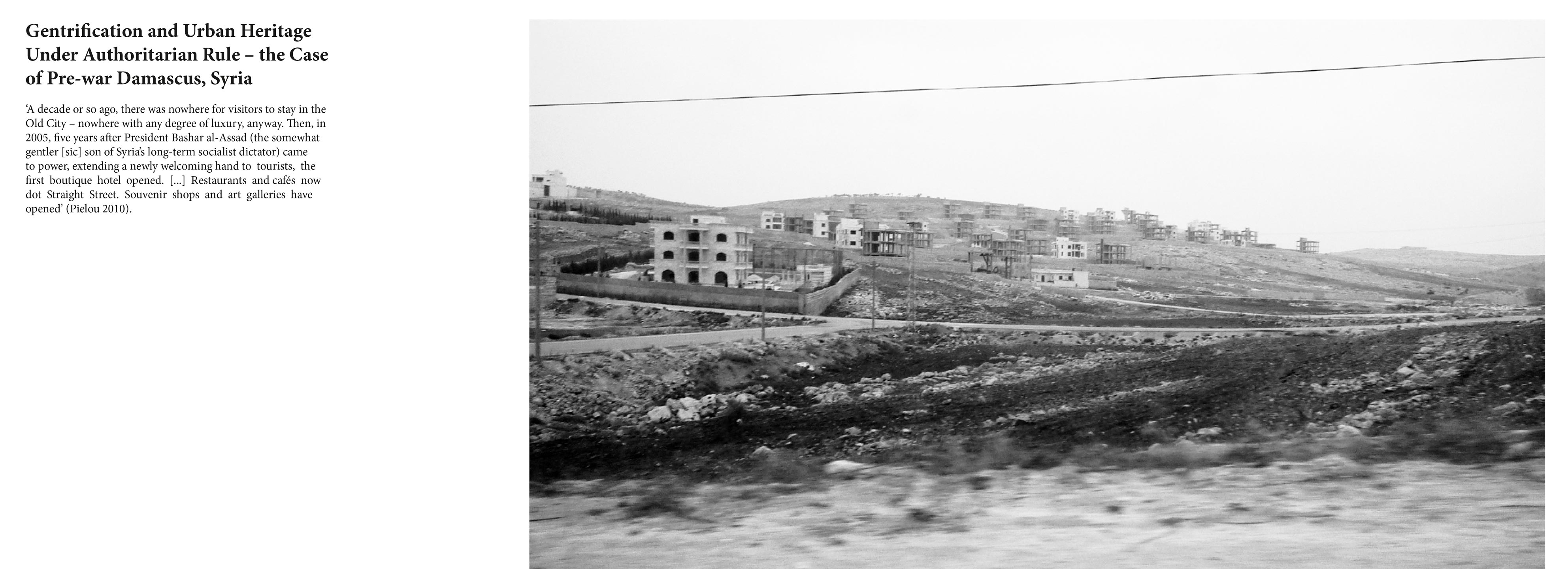
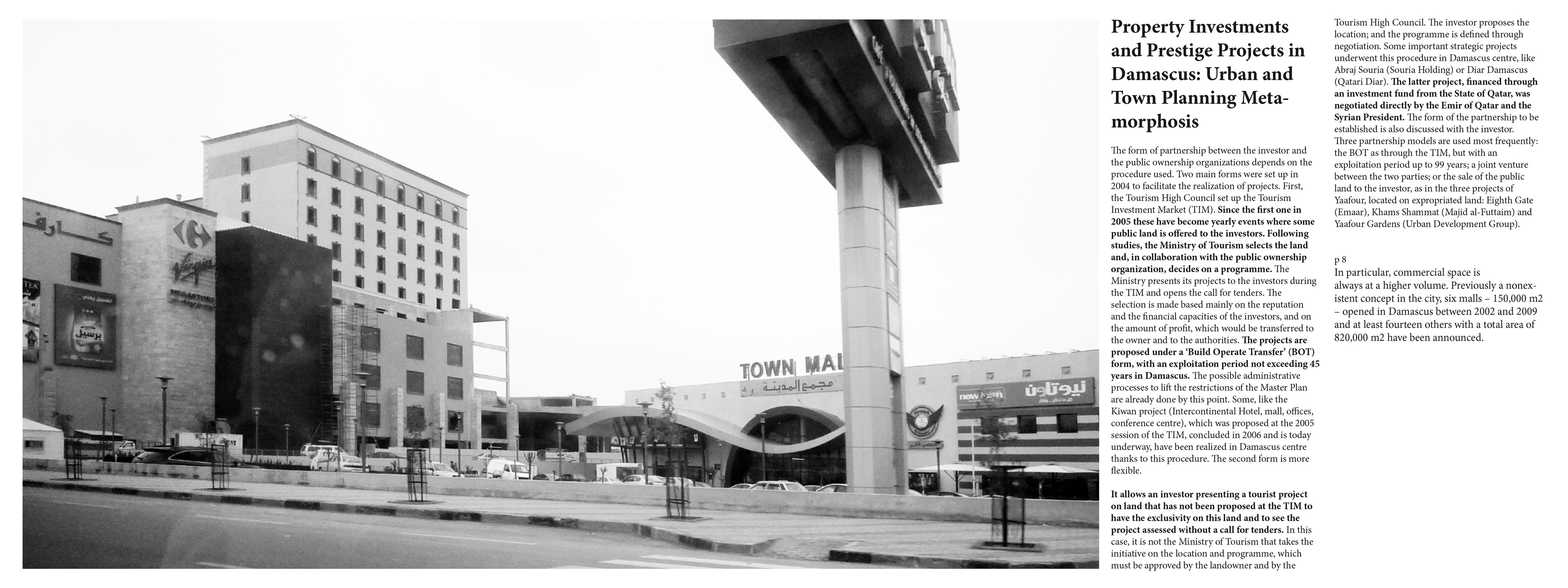
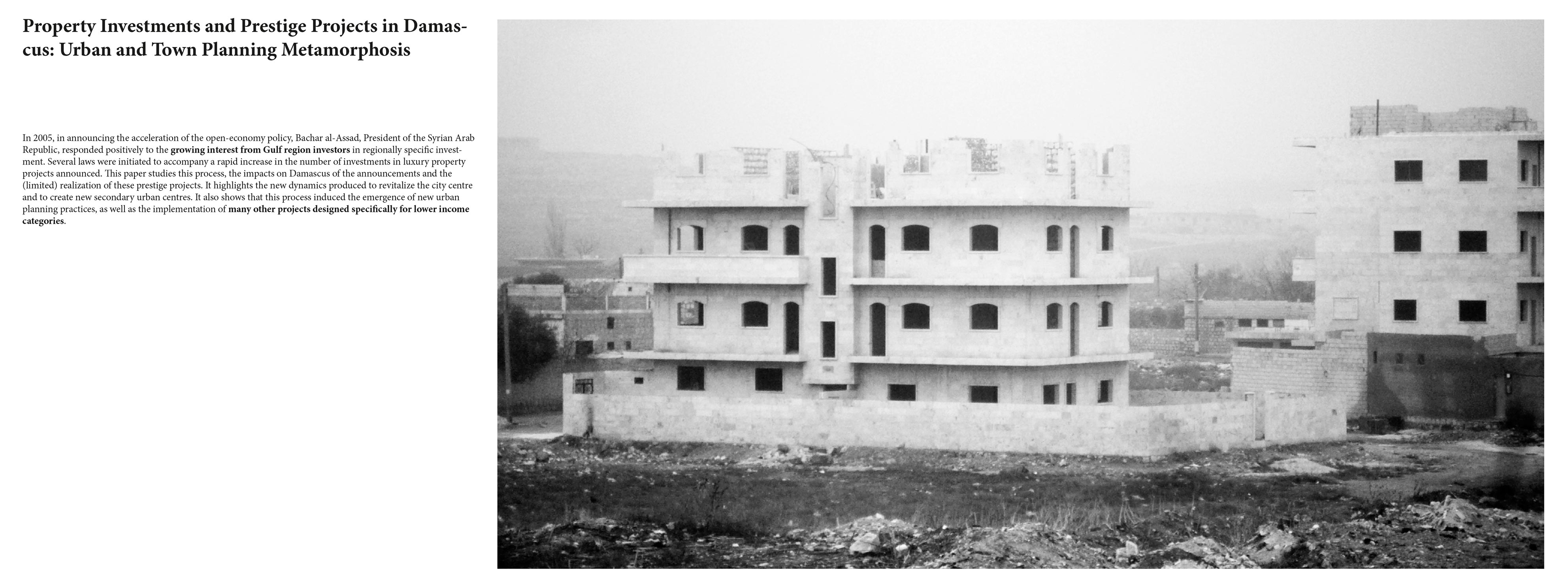
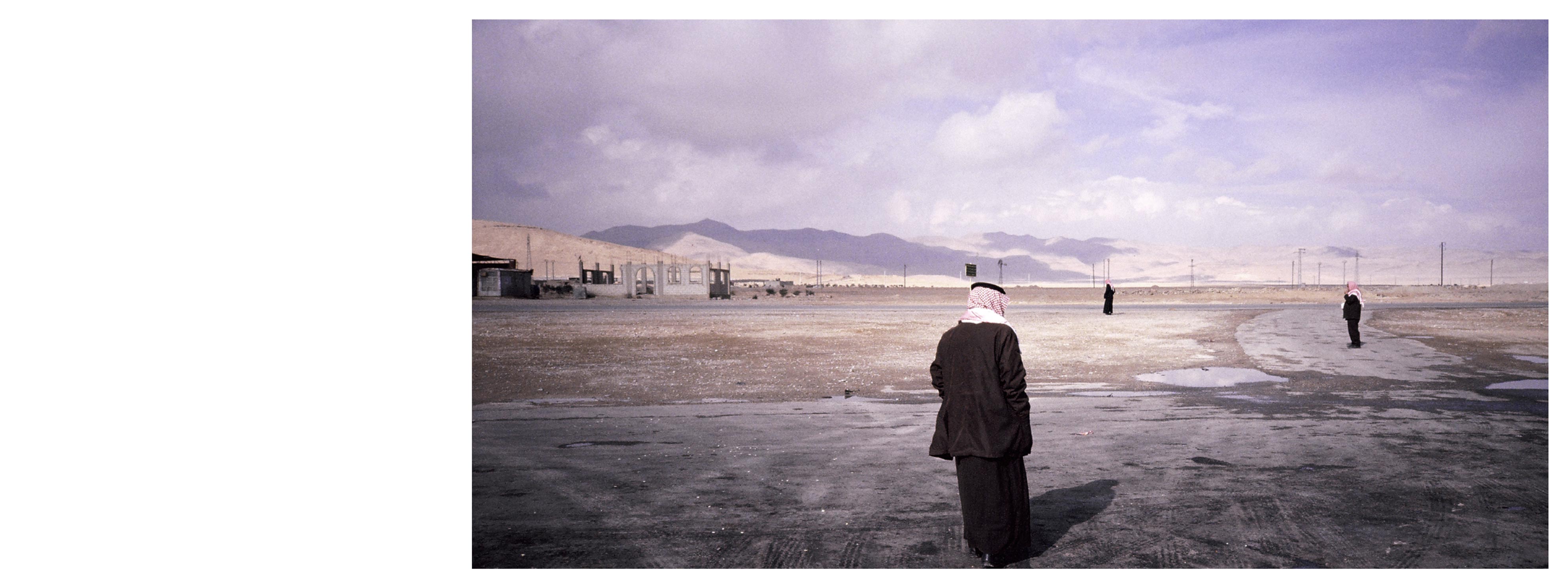
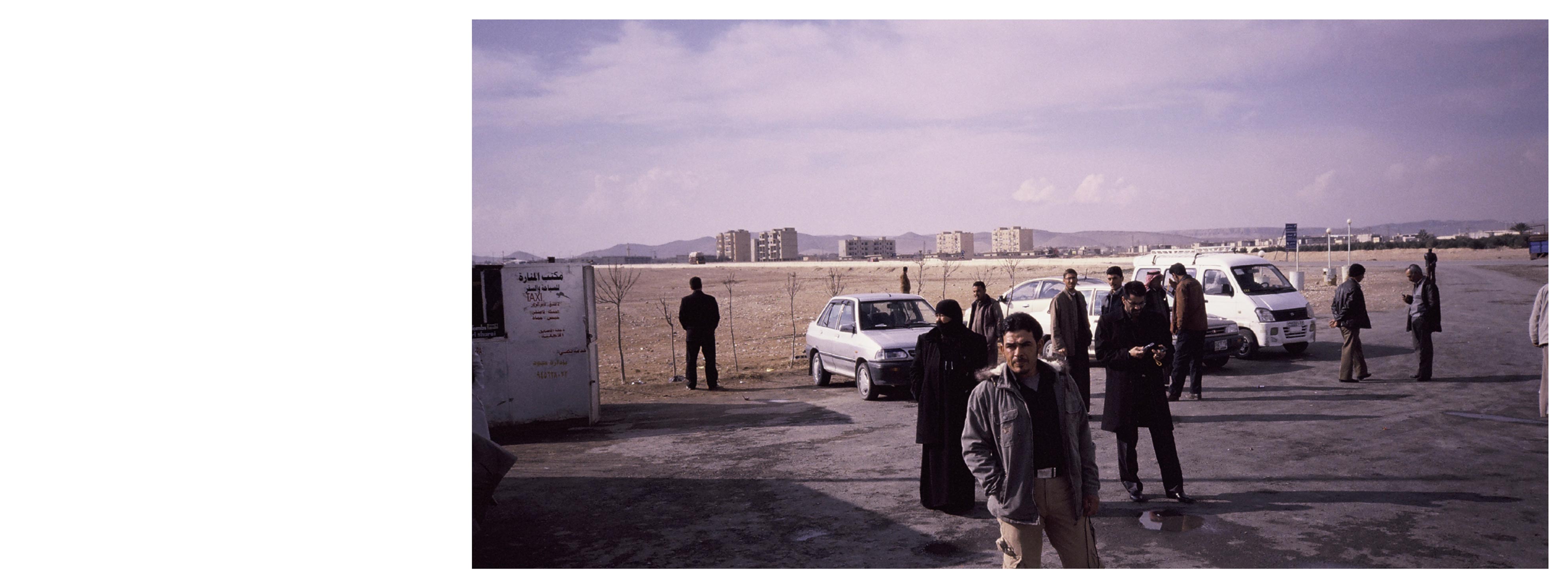

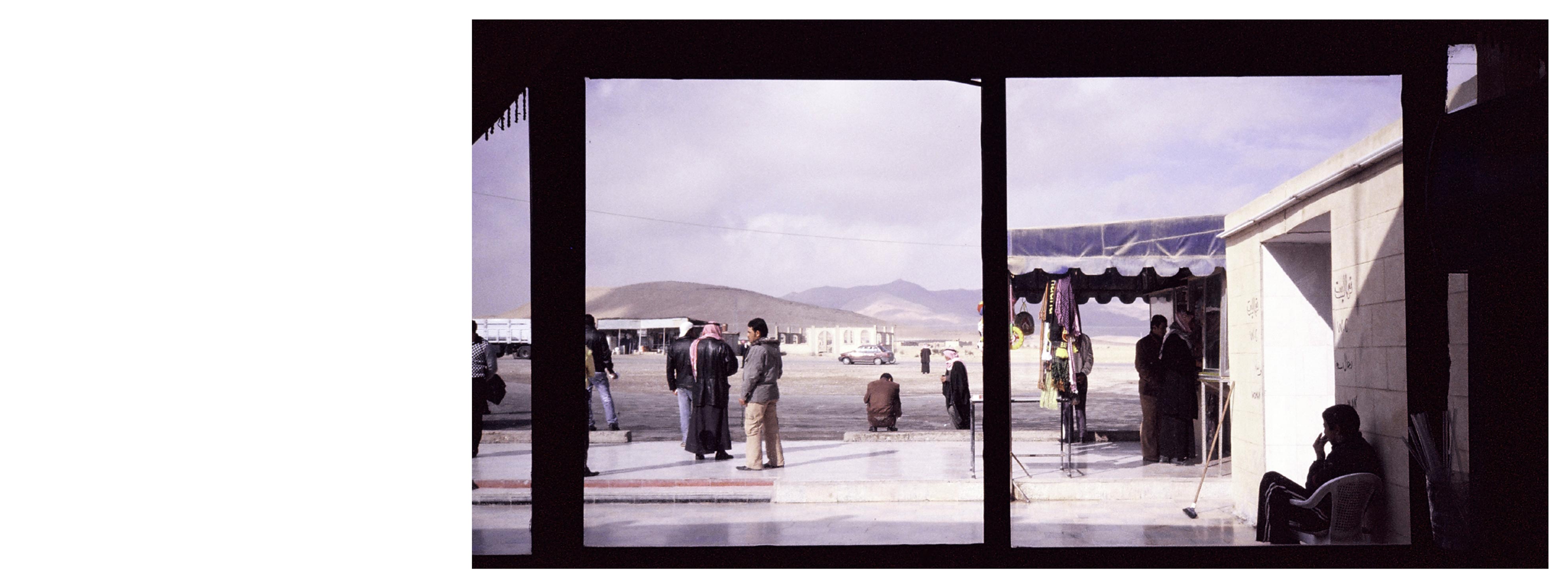


PRE-RUINS
Syrian suburban landscapeSYRIA 2011
IT
Il paesaggio periurbano
in Siria alla fine dell’anno 2010, due mesi prima dell’inizio della guerra che devasterà il paese per otto anni, sembra già una terra di nessuno.
Il passaggio
dal cantiere all rovina interrompe un processo che, secondo alcuni analisti, contiene gia i germi della guerra. Una vasta re-organizzazione urbana ampiamente sorretta da una logica speculativa di tabula rasa dell’antico tessuto urbano e repartizioine dei gruppi in quartieri confinati e con un accesso ineuguale a servizi e risorse.
Il presagio
sta proprio in questa estaetica diffusa di materia nuda, ostile all’appropriazione. Aree intere che immaginiamo più facilmente diventare rovine che ridenti zone residenziali. Questo messaggio si impone nella serie di fotografie. La guerra é già presente. La persistenza di questa sensazione invita a un lavoro di ricerca delle dinamiche politiche ed economiche che hanno trasformato Damasco ed Aleppo tra il 2000 ed il 2010.
Questo periodo corrisponde al governo di Bach’r Al Assad, fautore di una “svolta neo-liberale autoritaria”.
La costruzione di case e palazzi é stata qui stroncata dalla guerra come altrove, nello stesso periodo, dalla crisi finanziaria. Questo slancio immobiliare é certo congionturale a un momento dell’economia globale. Momento che si credeva propizio all’investimento ma in cui qualcosa é andato storto. Ho visto paesaggi simili in Grecia nel 2012.
Queste immagini sono il risultato di un flusso di attenzione quasi inconscio. La più parte sono prese da un auto o da un bus in corsa. Una reazione istintiva al paesaggio. La moltitudine di elementi non volontari che esse contengono, i puncti direbbe Barthes, contengono un messaggio che chiede di essere interpretato.
La chiave per interpretare le imamgini mi é data dal lavoro di due ricercatori nel campo dell’urbanismo. Entrambi hanno lavorato in Siria tra il 2005 ed il 2010, studiando i cambiamenti nelle politoche urbane.
Solo uno dei lavori, pubblicato nel 2012, incliude la guerra nella prospettiva.
EN
The peri-urban landscape
in Syria at the end of 2010, two months before the start of the war that will devastate the country for eight years, already looks like a no man's land.
The passage
from construction site to ruin interrupts a process which, according to some analysts, already contains the seeds of war. A vast urban re-organization largely supported by a speculative logic of a clean slate of the ancient urban fabric and departments of groups in confined neighborhoods and with unequal access to services and resources.
The omen
lies precisely in this diffuse esthetics of naked matter, hostile to appropriation. Entire areas that we imagine more easily become ruins than pleasant residential areas. This message imposes itself in the series of photographs. War is already present. The persistence of this sensation invites us to research the political and economic dynamics that transformed Damascus and Aleppo between 2000 and 2010.
This period corresponds to the government of Bach'r Al Assad, advocate of an "authoritarian neo-liberal turn".
The construction of houses and buildings was cut short here by the war as elsewhere, in the same period, by the financial crisis. This real estate momentum is certainly congural at a time in the global economy. Moment that was believed to be propitious for investment but in which something went wrong. I saw similar landscapes in Greece in 2012.
These images are the result of an almost unconscious flow of attention. Most of them are taken by a running car or bus. An instinctive reaction to the landscape. The multitude of non-voluntary elements they contain, the puncti as Barthes would say, contain a message that asks to be interpreted.
The key to interpreting the images is given to me by the work of two researchers in the field of urbanism. Both worked in Syria between 2005 and 2010, studying changes in urban politics.
Only one of the works, published in 2012, includes war in perspective
FR
Le paysage périurbain
de la Syrie de la fin 2010, deux mois avant le début de la guerre qui ravagera le pays pendant huit ans, ressemble déjà à un no man's land.
Le passage
du chantier à la ruine interrompt un processus qui, selon certains analystes, contient déjà les germes de la guerre. Une vaste réorganisation urbaine largement soutenue par une logique spéculative de tabula rasa du vieux tissu urbain et de répartition des groupes dans des quartiers confinés avec un accès inégal aux services et aux ressources.
Le présage
réside précisément dans cette estétique généralisée de la matière nue, hostile à l'appropriation. Des zones entières que nous imaginons sont plus susceptibles de devenir des ruines que des zones résidentielles agréables. Ce message s'impose dans la série de photographies. La guerre est déjà présente. La persistance de ce sentiment nous invite à rechercher les dynamiques politiques et économiques qui ont transformé Damas et Alep entre 2000 et 2010.
Cette période correspond au gouvernement de Bach'r Al Assad, partisan d'un "tournant autoritaire néo-libéral".
La construction de maisons et de palais a été stoppée par la guerre, tout comme elle a été stoppée ailleurs par la crise financière. Ce boom immobilier correspond certainement à un moment de l'économie mondiale. Un moment que l'on croyait propice à l'investissement mais au cours duquel quelque chose a mal tourné. J'ai vu des paysages similaires en Grèce en 2012.
Ces images sont le résultat d'un flux d'attention presque inconscient. La plupart d'entre elles sont prises depuis une voiture ou un bus en marche. Une réaction instinctive au paysage. La multitude d'éléments non volontaires qu'ils contiennent, les puncti dirait Barthes, contiennent un message qui demande à être interprété.
La clé d'interprétation des images m'est donnée par le travail de deux chercheurs dans le domaine de l'urbanisme. Tous deux ont travaillé en Syrie entre 2005 et 2010, pour étudier les changements dans la politique urbaine.
Seul un des ouvrages, publié en 2012, inculque la guerre en perspective.